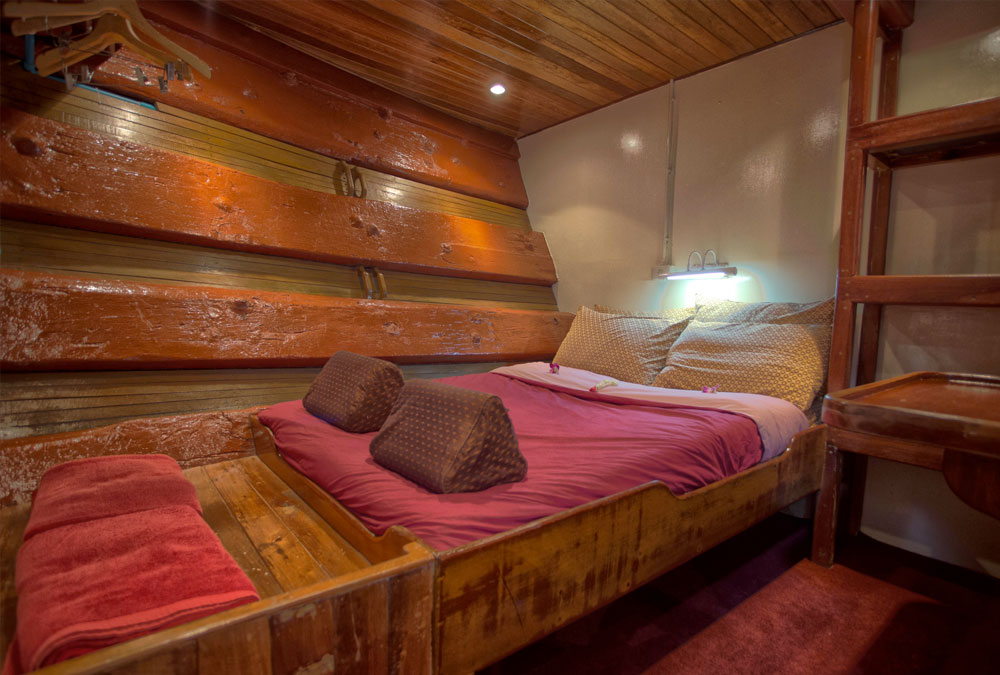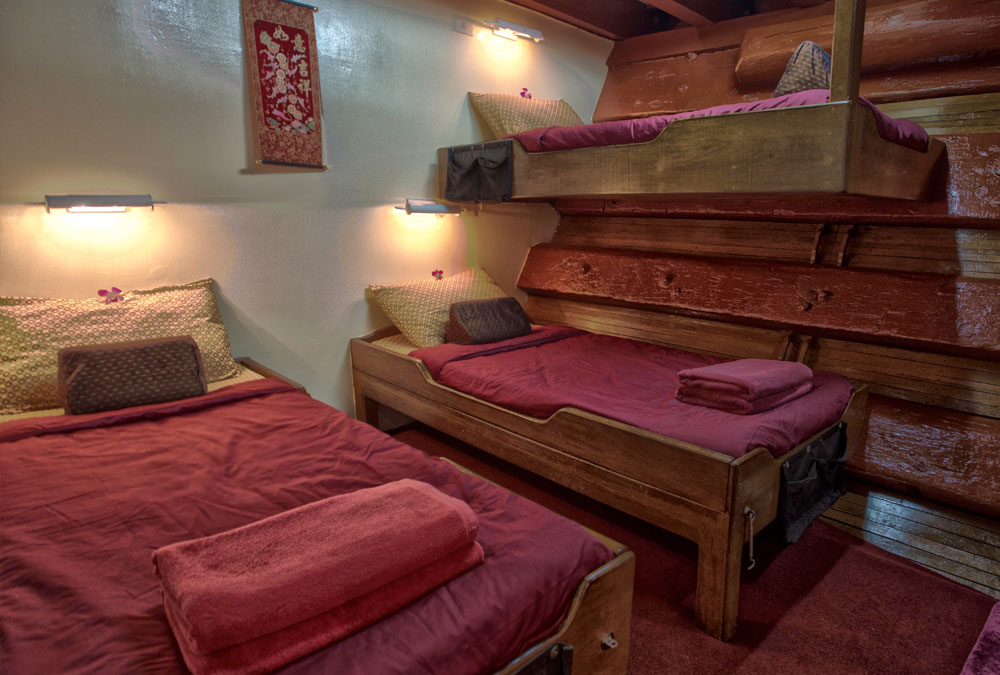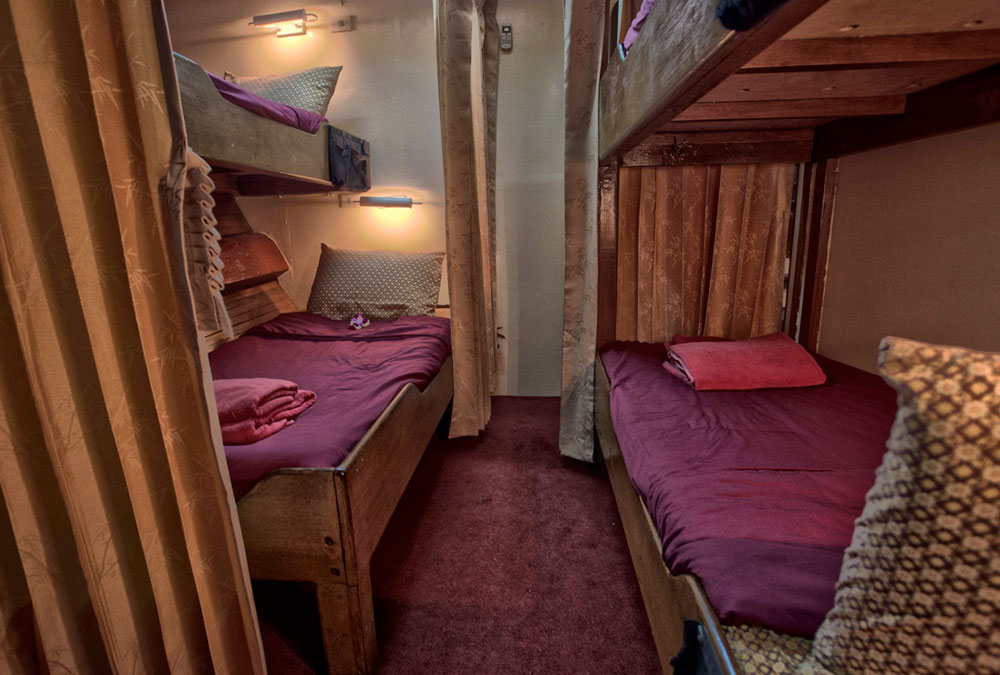DIVING
Eastward sites
Sites on the eastern side of the islands tend to be sand covered fringing reefs predominantly made up of hard coral. The reef plateau’s are around 5-10 metres deep and from here you have gentle slopes heading down to the reef edge at around 20-25m. The Eastern sides of the Similans also tend to have more gentle currents. This makes the Eastern dive sites ideal for both divers of all levels and snorkelers too. On Eastern sites you can expect to see a huge variety of coral reef fish. On sand passes look out for garden eels, blue-spot mask rays and the endemic blue-spot jaw fish. Specials include harlequin and robust ghost pipefish, short pouch pygmy pipehorses and hawksbill turtles.
Westward sites
Sites on the west side of the islands are a little different. Here giant granite boulders tumble to the sea bed easily reaching depths of 40m. The more exposed side of the Similans can be prone to stronger and more unpredictable currents. The currents have kept the boulders free from a build up of sand, leading to boulder dive sites with a variety of canyons, tunnels, swimthroughs, archways and caverns. It can be more challenging diving but hopefully the increased chance of larger pelagics makes up for that. Also keep an eye out for andaman sweetlips, dogtooth tuna and anglerfish.
SAMPLE ITINERARY - Khao Lak to Phuket
Please note also that this itinerary is an example only, and will change depending on weather and logistics at the Captain's discretion.
The following is a sample itinerary of where you might dive during your holiday with us. We wish to show you the very best diving but a number of factors can determine where we visit. Weather, tides, how busy a site is with other dive vessels all play a part in the Cruise Director’s decision of which route the yacht takes. The safety of all on board is paramount and we always do our best in offering diving at alternate locations. The Cruise Director is happy to listen to requests from guests to visit or remain at certain sites and providing it is possible and the schedule allows, then guest’s requests are respected.
- Your Cruise Director will schedule up to 4 dives per day; 3 day dives and either a sunset or a night dive. The diving day has a typical schedule as follows:
- Light Breakfast followed by a briefing & Dive 1
- Full Breakfast, relaxation followed by briefing & Dive 2
- Lunch, relaxation followed by briefing & Dive 3
- Dinner will be served either before or after the sunset/night dive
- Day 1 and Day 11 are reserved for embarkation and disembarkation, there will be no diving on these days.
For the final day aboard we schedule 3 dives to allow plenty of time for off-gassing before disembarkation and your flight home.
THE DIVING
Similan Islands
The above water scenery will provide stunningly beautiful white sandy beaches with small forested areas. Dive some of the following sites; Boulder City, Sharkfin Reef, Anita's Reef and Honeymoon Bay. Under the surface you may see: Leopard (zebra) shark, blue spotted stingrays, clown trigger fish, rabbit fish, scorpion fish, snappers, emperor fish, giant trevally and angelfish. The coral gardens, bommies and boulder formations are wonderful to dive. Elephant Head Rock, visible from the surface, this is the biggest pinnacle in the Similans and has some fantastic swim-throughs. If lucky you might see some white tip reef sharks, batfish, trevally and barracuda can often be seen on the perimeter of the boulders and if you look closely in the cracks and in the rubble you can see smashing mantis shrimp, porcelain crab, moray eels and cleaner shrimp.
Koh Bon
Koh Bon is a dive site where manta rays may be seen. You are likely to see Napoleon wrasse, sweetlips, octopus, blue fin trevally, giant moray eels, great barracudas, fire dart goby, popcorn shrimp, spiny lobster and nudibranchs of many types. The dive sites vary from wall diving to gently sloping reefs and from submerged boulders to coral gardens.
Koh Tachai
Koh Tachai is famous for its pinnacle dive site and more relaxed reef diving. Normally Leopard Sharks, Marbled Whip Rays, Turtles, Barracuda, Pipe Fish, and Nudibranchs can be found here. There is also a chance to see bigger species in this area like Manta Rays and Whale Sharks, especially by late January till April.
Richelieu Rock
Richelieu Rock. This limestone pinnacle was named by Jacques Cousteau after the character in the Three Musketeers, Cardinal Richelieu, as it reminded him of his deep scarlet cape. There are gorgeous purple dendronepthya soft corals covering most of the pinnacle and other areas covered in magnificent sea anemones as well. Barely breaking the surface at low tide, this horseshoe-shaped outcropping, slopes steeply to a sandy bottom at 18 to 35 meters (60-120 Ft). This site offers great diversity for such a small and isolated spot. It also offers excellent multi-level diving and, because it’s a high-profile reef, there’s always sheltered areas to hide from current. The marine life is prolific and includes amongst, many other things; Pharaoh cuttlefish, large octopi, all 5 varieties of anemone fish of the Andaman Sea, variety of moray eels, ornate ghost pipefish, smashing mantis shrimps, harlequin shrimps, tiger tail sea horses, Spanish mackerel, frog fish, many schooling snapper and occasional sightings of manta rays and whale sharks.
Surin Islands
Topside scenery of Koh Surin with evergreen forests, mangroves and small beaches, surpasses even that of the picturesque Similan Islands. Under water the reefs of Surin have the greatest hard coral diversity in Thailand. You are likely to see Napoleon wrasse, yellow-masked angelfish, bumphead parrotfish, tomato anemonefish and barramundi, as well as lots of turtles that still come ashore in this area to lay their eggs. Because of the remoteness not many liveaboard boats visit these islands and you will be able to enjoy the dive sites without sharing it with tourist hordes.
Khao Lak Wrecks
For cruises disembarking in Khao Lak, if conditions and timing are favourable there is a choice of easily diveable wrecks between The Similan Islands and Khao Lak. The Boonsung and the Premchai are old tin miners that were sank 25 or so years ago and are a treat for underwater photographers as well as lovers of life of all kinds!! Only in 18m of water they are covered in nudibranchs and shrimps as well as large numbers of the unusual leopard moray. There are also huge numbers of schooling fish as well as rays and leopard sharks that can occasionally be seen. Sea Chart 1 is a slightly more challenging dive and lies between 40 and 25 metres. Sunk during a storm in 2009 with a full load of teak, she is relatively new but already hosts an abundance of schooling fish.








